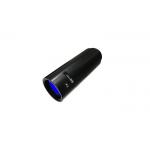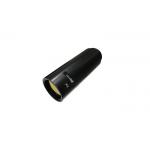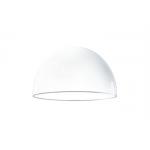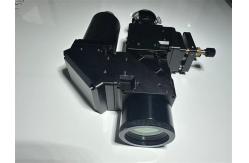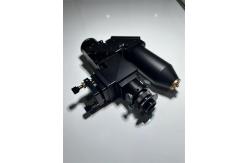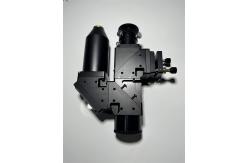Product Description:
The Visual laser constant temperature soldering system is composed
of eyepiece, objective and temperature monitor.
A 915nm visual laser constant temperature soldering system refers
to a soldering system that utilizes a laser emitting light at a
wavelength of 915nm for soldering applications. The "visual" aspect
implies that the system provides a visible light output, which can
aid in aligning and positioning the soldering process.
In a constant temperature soldering system, the laser is designed
to provide a consistent and controlled amount of heat to melt the
solder material and create a reliable bond between components. By
using a laser as the heat source, the system can offer precise and
localized heating, which is beneficial for soldering delicate or
small electronic components.
The 915nm wavelength is within the infrared range of the
electromagnetic spectrum, and it is commonly used in soldering
applications due to its ability to efficiently heat the solder
material without causing excessive thermal damage to surrounding
components or substrates.
Features:
- Product Name: Visual laser constant temperature soldering system
- Application: Plastic Soldering, Diode-laser Soldering System
- Customization: Supporting Customization
- Design Wavelength: 915nm
- Composition: Eyepiece, Objective, Temperature Monitor
- Optics Material: Optical Glass
- Features: Glass made lens, mirrors
Technical Parameters:
| Parameter | Value |
|---|
| Mount Material | Black Anodized Aluminum |
| Application | Plastic Soldering, Diode-laser Soldering System |
| Design Wavelength | 915nm |
| Product | 915nm Visual Laser Constant Temperature Soldering System |
| Customization | Supporting Customization |
| Optics Material | Optical Glass |
| Glass Made Lens | Positive Focal Length Lens, Negative Focal Length Lens |
| Composition | Eyepiece, Objective, Temperature Monitor |
How a visual laser constant temperature soldering system might work:
- Laser Source: The system includes a laser source that emits a
high-powered laser beam. The laser beam serves as the heat source
for melting the solder.
- Visual Feedback: The system incorporates a visual feedback
mechanism, such as a camera or an imaging system. This allows the
operator to view the soldering process in real-time, providing
enhanced visibility and control.
- Temperature Control: To maintain a constant temperature during
soldering, the system employs a feedback loop that continuously
monitors the temperature at the soldering point. This feedback loop
adjusts the laser power output to maintain a consistent
temperature, which is crucial for achieving reliable and repeatable
solder joints.
- Soldering Tip: The laser beam is directed through a soldering tip
or nozzle, which focuses the heat onto the target solder joint. The
soldering tip is designed to efficiently transfer the laser energy
and heat to the solder and the components being soldered.
- Soldering Process: The operator positions the soldering tip over
the solder joint and activates the laser. The laser beam heats the
solder, causing it to melt and flow onto the joint. The visual
feedback system allows the operator to monitor the soldering
process in real-time, ensuring precise alignment and control.
- Cooling and Solidification: Once the solder joint is formed, the
laser is turned off, and the solder cools and solidifies, creating
a reliable electrical and mechanical connection between the
components.
Benefits of a visual laser constant temperature soldering system
may include:
- Precision: The visual feedback system enables precise alignment and
control during the soldering process, allowing for accurate solder
joint formation.
- Consistency: The temperature control mechanism ensures a constant
temperature, leading to consistent soldering results and minimizing
the risk of thermal damage to sensitive components.
- Efficiency: Laser soldering can be faster than traditional
soldering methods since the laser provides rapid and localized
heating.
- Versatility: Laser soldering systems can be used for various
soldering applications, including surface mount technology (SMT),
through-hole components, and fine-pitch soldering.

